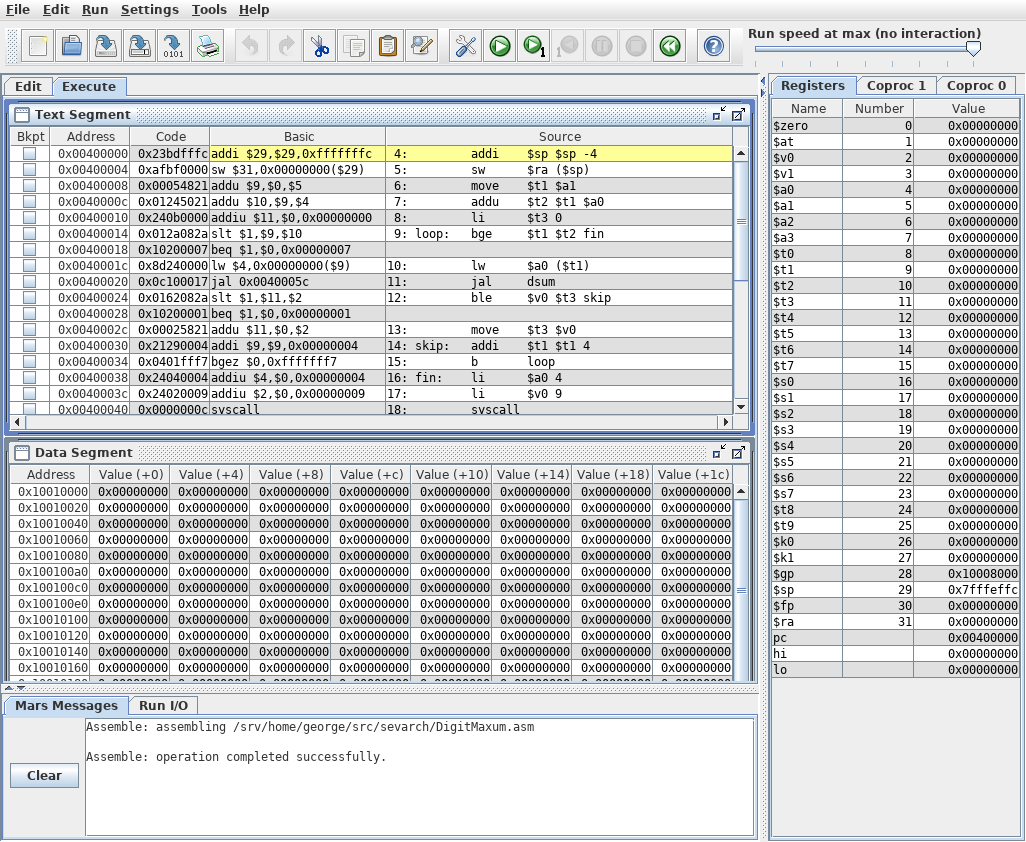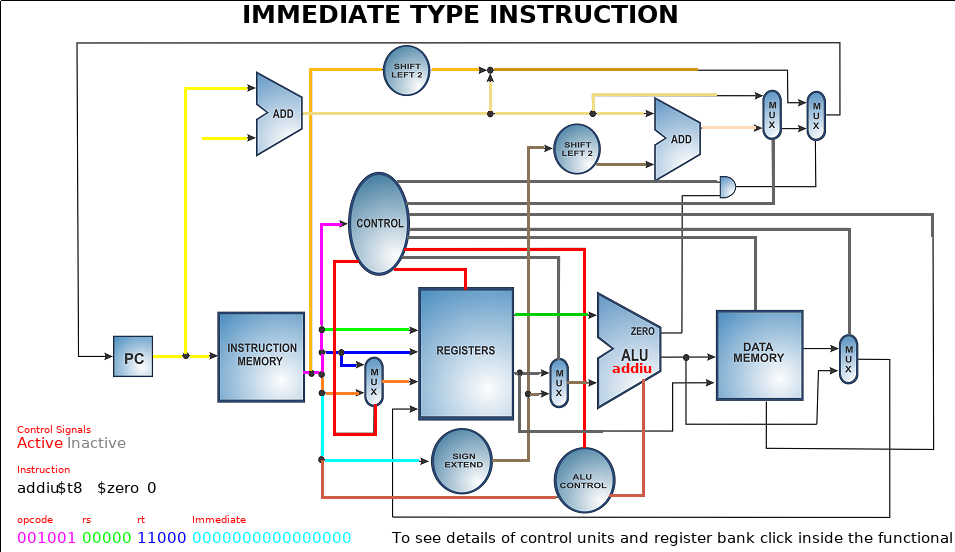Computer architecture and assembly language
course at CMC MSU:
way to survive
Mikhail E. Rudachenko
Why?
- It's a basic course (2nd semester)
- It's only a semester long
- It requires both theory and labs
- Now CMC students can (not) choose from
- Simple, but outdated course
- Modern, but overstructured course
Basic Course
- Aim:
- the reason behind computer architecture
- …supported by practice
- Goals:
- Simulation of diverse model CPU types
- Modern computer architecture principles
- …illustrated by autocode examples
- Assembly language practice
- Length: 54 a. h. lectures + 54 a. h. labs
Others
Officially there is also two educational paths
- «Simple»
- 16-bit Intel
- MASM / DOS
- «Modern»
- x86_64
- Nasm / Linux
Both concentrated on assembly more than on architecture
(for different reasons though)
How?
- CMC Model Machine familly
- Main architecture: MIPS32
- Main tool: MARS
- LMS: Moodle
- Homework tests: EJudge
Model Machines
- 3-address
- 2-address
- 1-address
- Indeterminate length
- Register
MIPS32
- MIPS32 instruction set
- IDE / Simulator / Debugger
- Tools
- CLI simulation
- MIPS memory models
- Traps / exceptions / interrupts / MMIO
- Syscalls
- FPU / control CPU (partial)
- Pseudoinstructions / macros / includes
- Used at MSU CMC
- Lectures
- Papers and other stuff
- Labs
- Tests
- Logged chat
It is contest management system, but also used for homework testing/checking
- Used at MSU CMC
- Rebuilds program before checking
- Can verify (among others):
- Program output over reference input/output
- Program footprint and execution time
- Program source
- Both modelmachine.py and MARS run as GUI-less interpreters
What?
- Model Machines
- MARS:
- Simulator+IDE
- Peripherials
- Cache
- Graphics
Model Machines
- Hexadecimal code
- Text program format
- Input/output
- Interpreter
- Debugger
- Primitive assembly
- Writen in python
$ cat max3.mm
mm2
[config]
input= 0x100, 0x0101, 0x0102
output = 0x103
[code]
00 0103 0100
05 0103 0101
86 0000 0004
00 0103 0101
05 0103 0102
86 0000 0007
00 0103 0102
99 0000 0000
[input]
$ python3 -m modelmachine run max3.mm
5 7 1
7

MARS peripherials
- MMIO
- Polling
- Interrupts
- Kernel programming
- … some virtual devices
Led + buttons
Console
MARS tools

- Cache simulator
- Branch history
- FPU caclulator
- Memory reference
- CPU diagram
- …others

MARS raster graphics
So?
Good practice coverage and technological scope
but
- MM is good, but out of line
- Feature lack in MARS: VM, DMA, multicore etc.
- No time for another platform/emulator
- Switch to RiscV maybe?
Results
- Over 75% lectures are supported by labs
- MM is too stiff framework by design
- There's paradigm gap between MM and MIPS32
- MARS does not cover all our needs
- …but there's no time to involve more simulators
- …say nothing of more architectures
- Extra architecture models (e. g. stack machine)
- MARS: Pipe is fuzzy (anoter sim is used)
- Not in MARS:
- Virtual memory
- Vector / full superscalar flow
- Multcore
- Virtualization
- Predictive calculations
- Assembly to C bridge (absolutely no time)
Futher work
- Extending MARS
- Find out an easy way to involve QEMU/whatever
- Switch to RiscV
- Visual tool (like MARS)?
- Subset (like Risc-U)
Any other questions?
George V. Kouryachy
(gmail/telegram/etc: FrBrGeorge)
Mikhail E. Rudachenko
CA & AL
By Георгий Курячий
CA & AL
Computer architecture and assembly language course at CMC MSU: way to survive (LVVEw2018)
- 1,650





